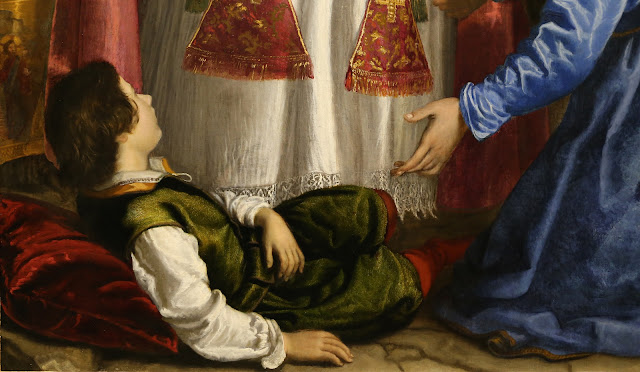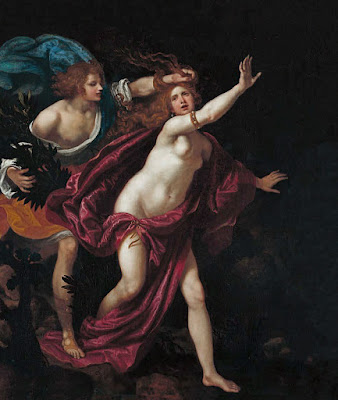 |
| Giovanni Bilivert Venus, Cupid and Pan before 1644 oil on copper private collection |
 |
| Giovanni Bilivert Virgin blessing a kneeling Saint before 1644 drawing Scottish National Gallery, Edinburgh |
 |
| Giovanni Bilivert St Zenobius raising a Dead Boy ca. 1610-20 oil on canvas National Gallery, London |
 |
| Giovanni Bilivert St Zenobius raising a Dead Boy (detail) ca. 1610-20 oil on canvas National Gallery, London |
 |
| Giovanni Bilivert Study of Draped Woman before 1644 drawing British Museum |
 |
| Giovanni Bilivert Joseph and Potiphar's Wife before 1644 drawing Morgan Library, New York |
 |
| Giovanni Bilivert Apollo and Daphne 1630 oil on canvas Staatsgalerie, Stuttgart |
 |
| attributed to Giovanni Bilivert Apollo and Marsyas ca. 1630 oil on canvas Palazzo Pitti, Florence |
 |
| Giovanni Bilivert St Sebastian attended by St Irene and Maid before 1644 drawing Metropolitan Museum of Art, New York |
 |
| Giovanni Bilivert Archangel Raphael refusing Tobias's Gift 1622 drawing Getty Museum, Los Angeles |
 |
| Giovanni Bilivert Archangel Raphael refusing Tobias's Gift 1622 oil on canvas Palazzo Pitti, Florence |
 |
| Giovanni Bilivert Marriage of Sarah and Tobias 1620 oil on canvas Museo Nacional de San Carlos, Mexico City |
 |
| Giovanni Bilivert St Peter baptizing the Centurion ca. 1604-1607 drawing Rijksmuseum, Amsterdam |
 |
| Giovanni Bilivert Angelica ashamed of her nakedness before Ruggiero (scene from Ariosto's Orlando Furioso) ca. 1624 oil on canvas Palazzo Pretorio, Prato |
 |
| Giovanni Bilivert Temptation of Carlo and Ubaldo (scene from Tasso's Gerusalemme Liberata) ca. 1629-30 oil on copper Musée du Louvre |
"Giovanni Bilivert was born into an artistic family: his father, Jacques Jansz Bijlevelt, was of Dutch origins but enjoyed success in Florence during the last quarter of the 16th century as goldsmith to the Medici. Indeed it was upon Ferdinando I de' Medici's recommendation that Giovanni Bilivert was successfully apprenticed to Lodovico Cardi (called il Cigoli) in Florence and was chosen to accompany his master to Rome between 1604 and 1608. Apart from this Roman sojourn and a brief stint in Siena some time before 1603 Bilivert was active in Florence, where he was later to head up one of the most successful workshops in the city."
– from biographical notes published by Sotheby's, London